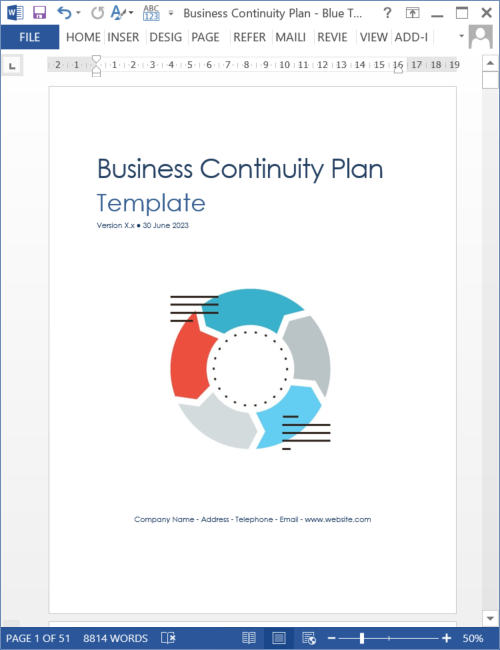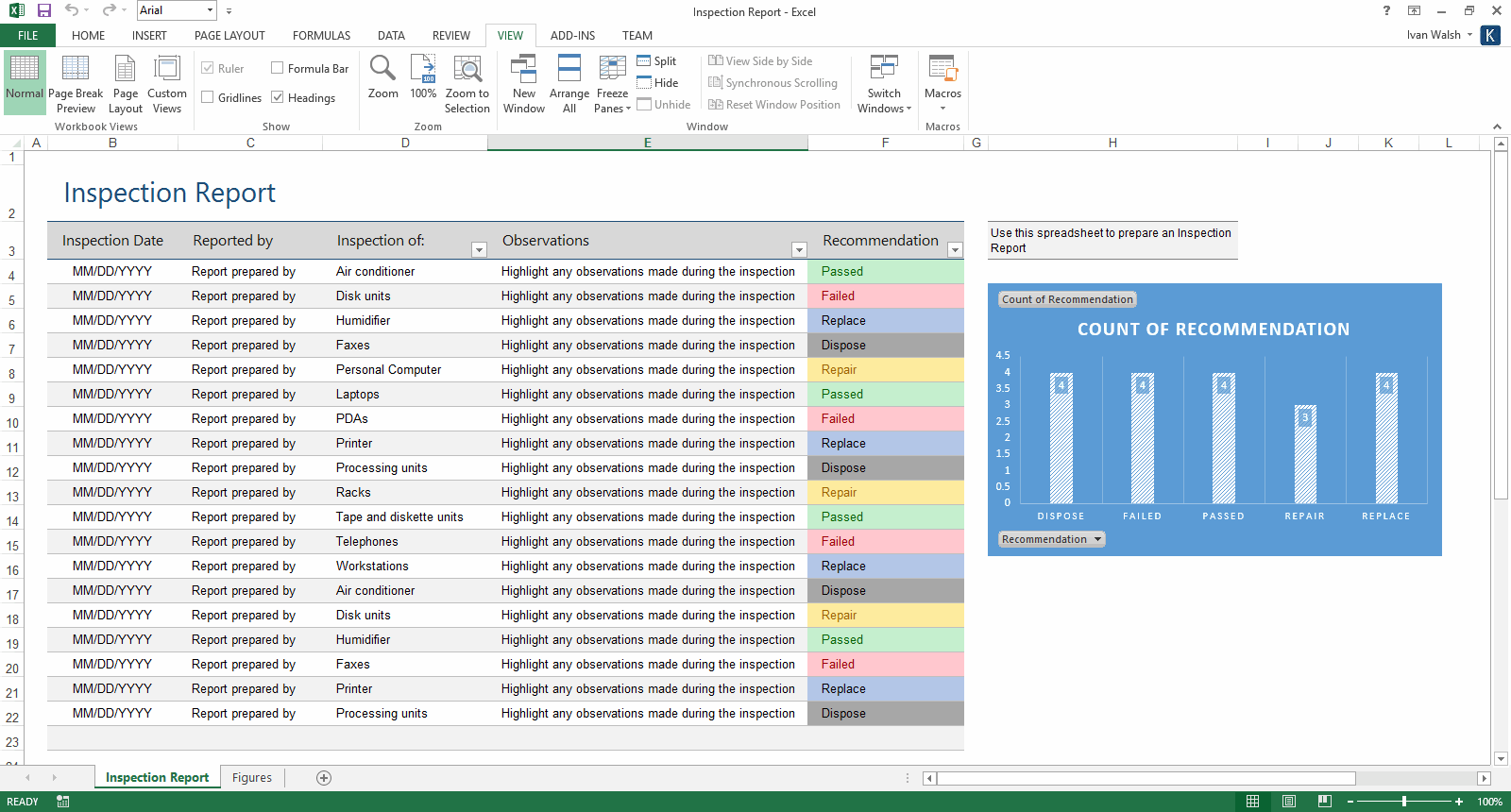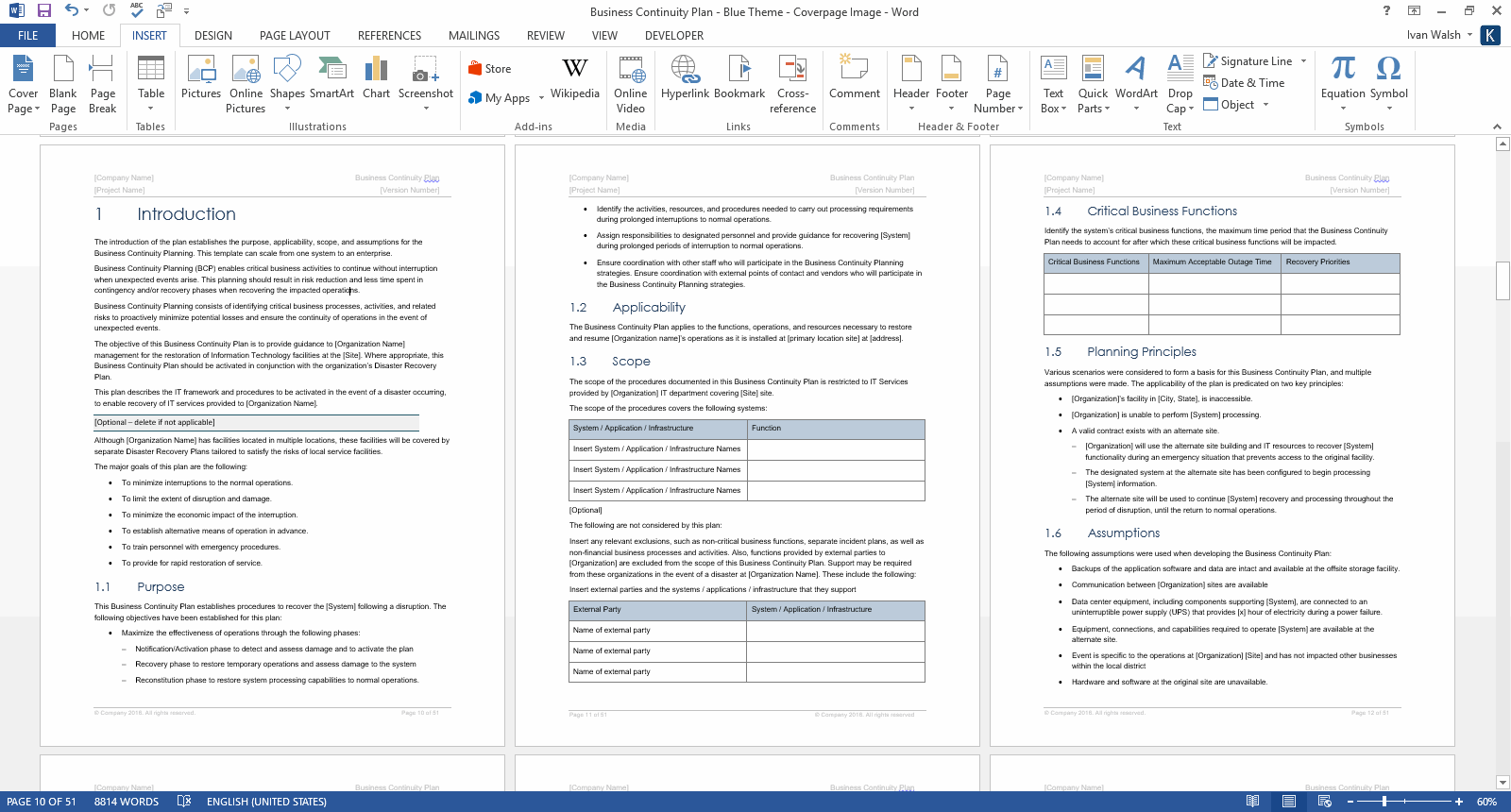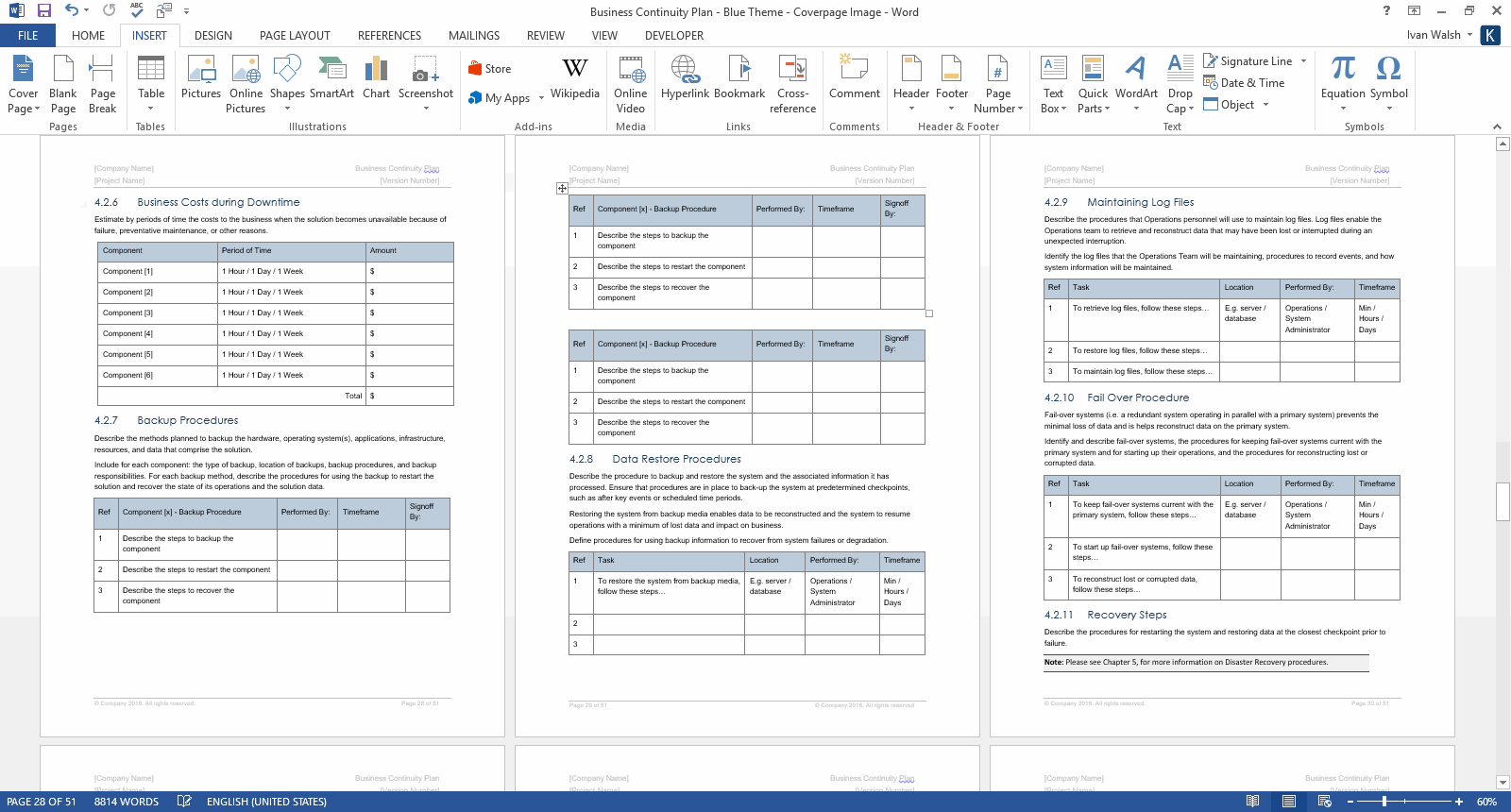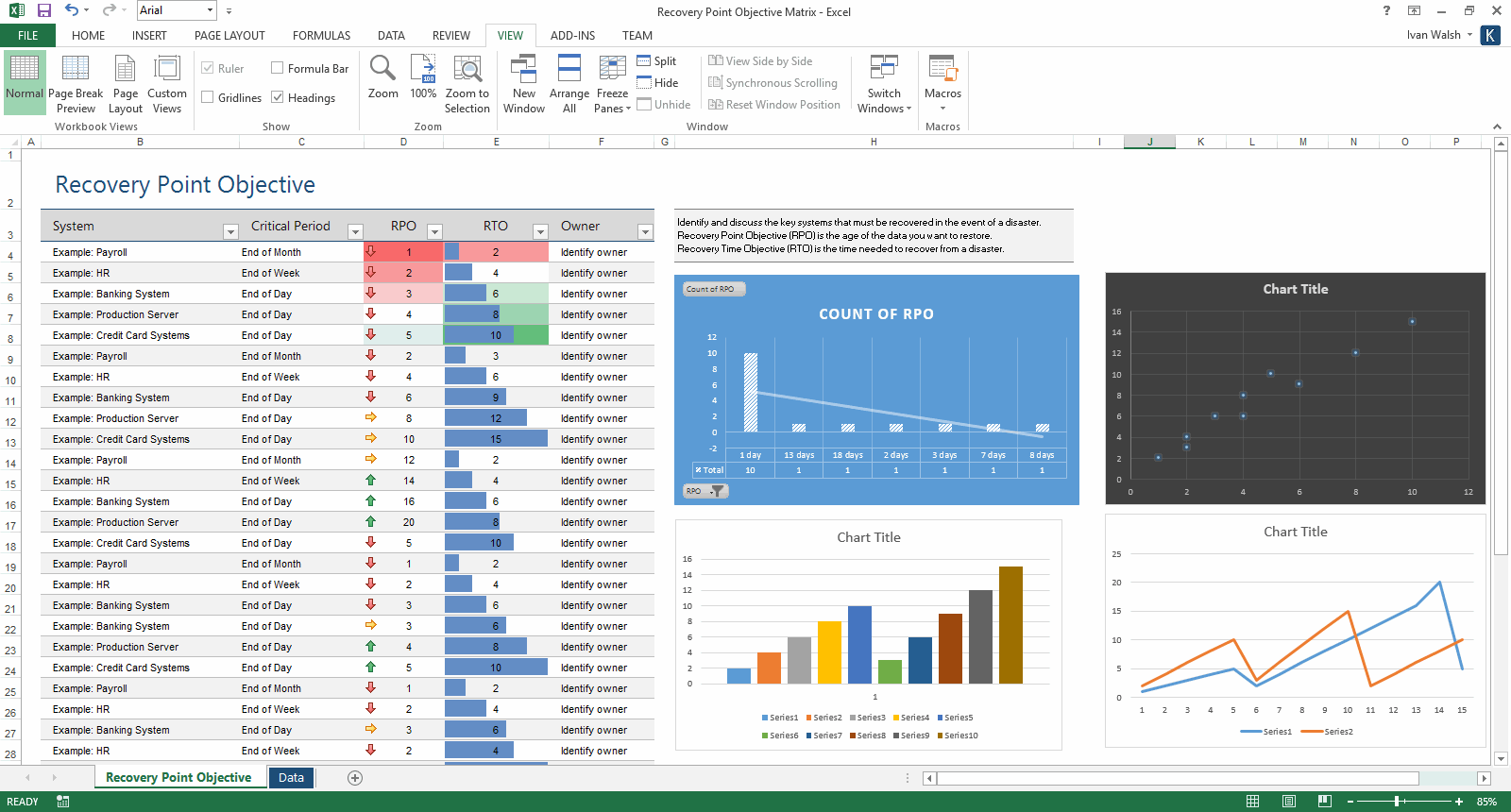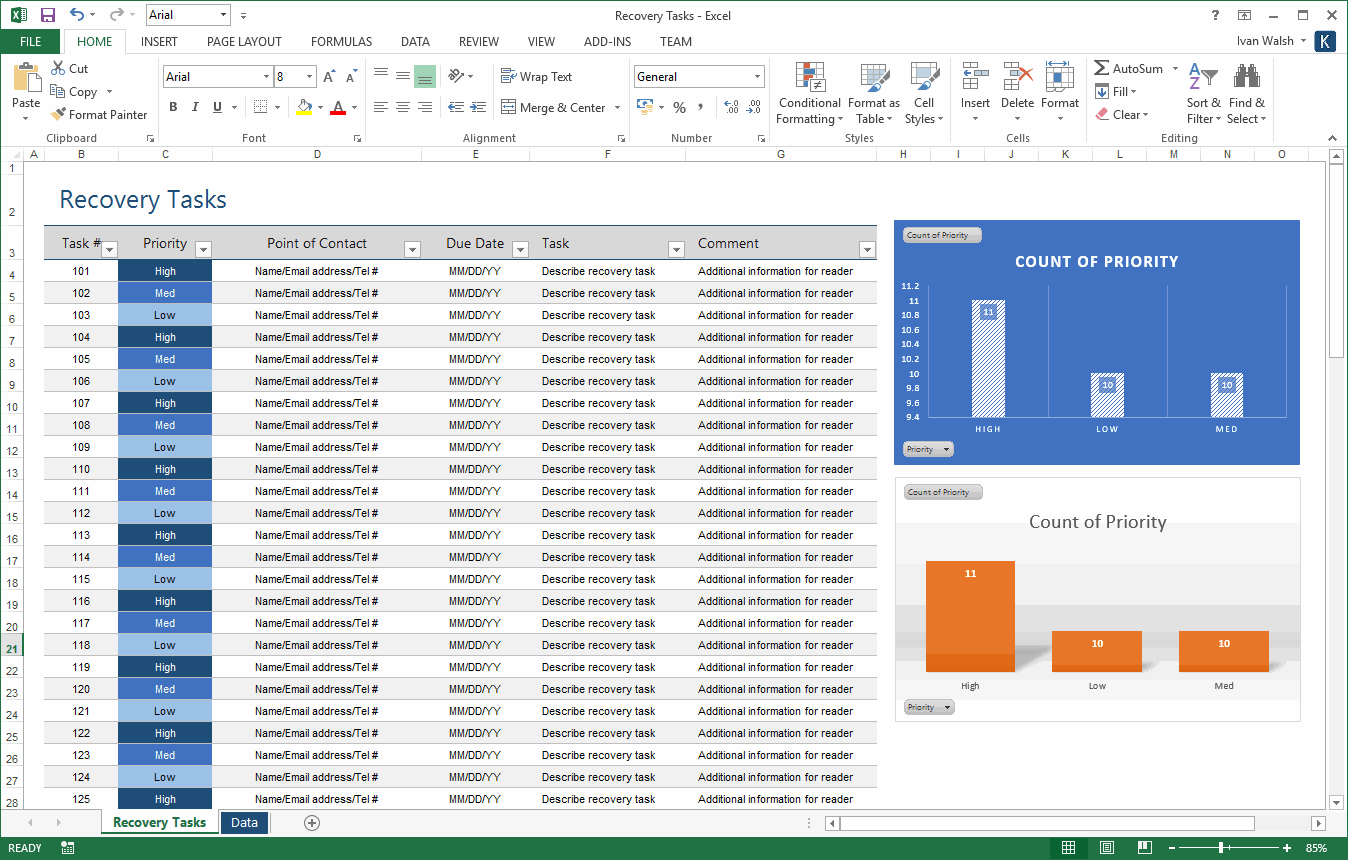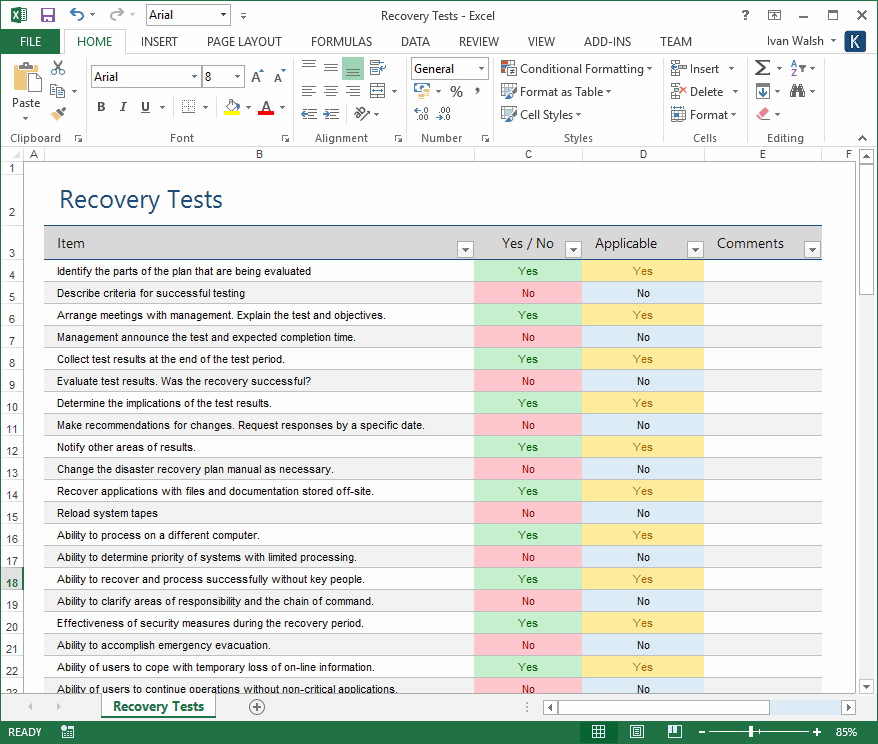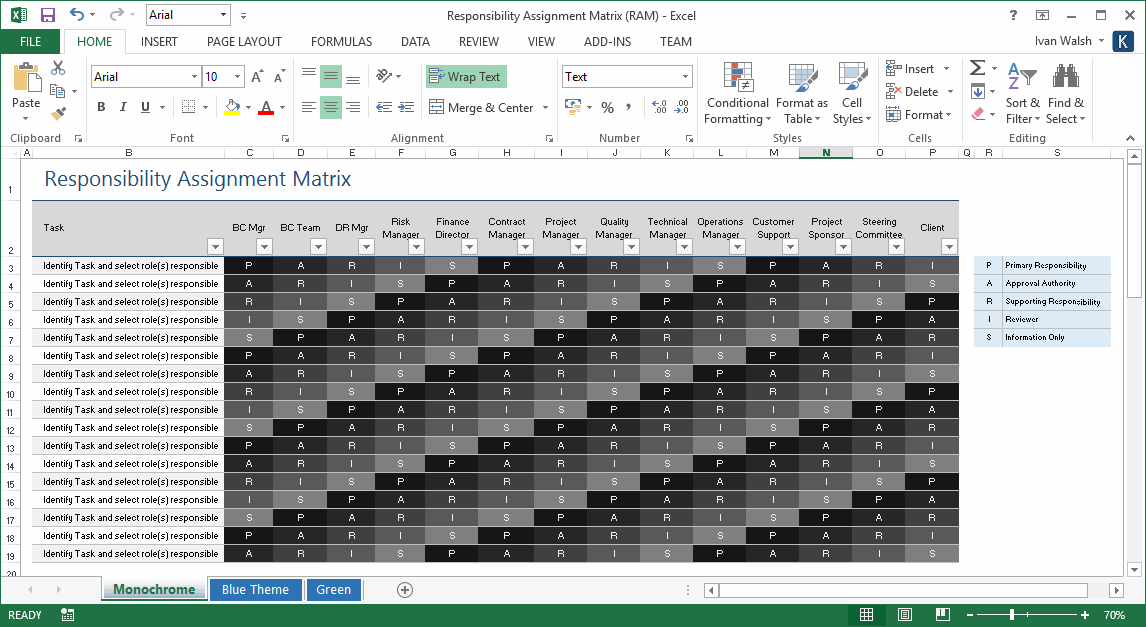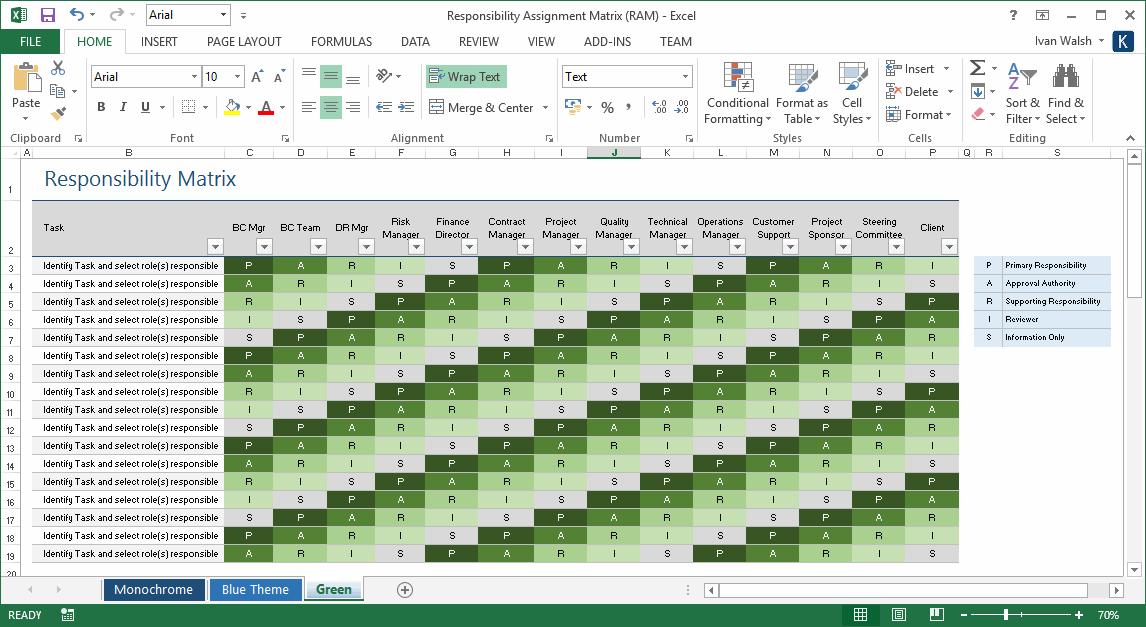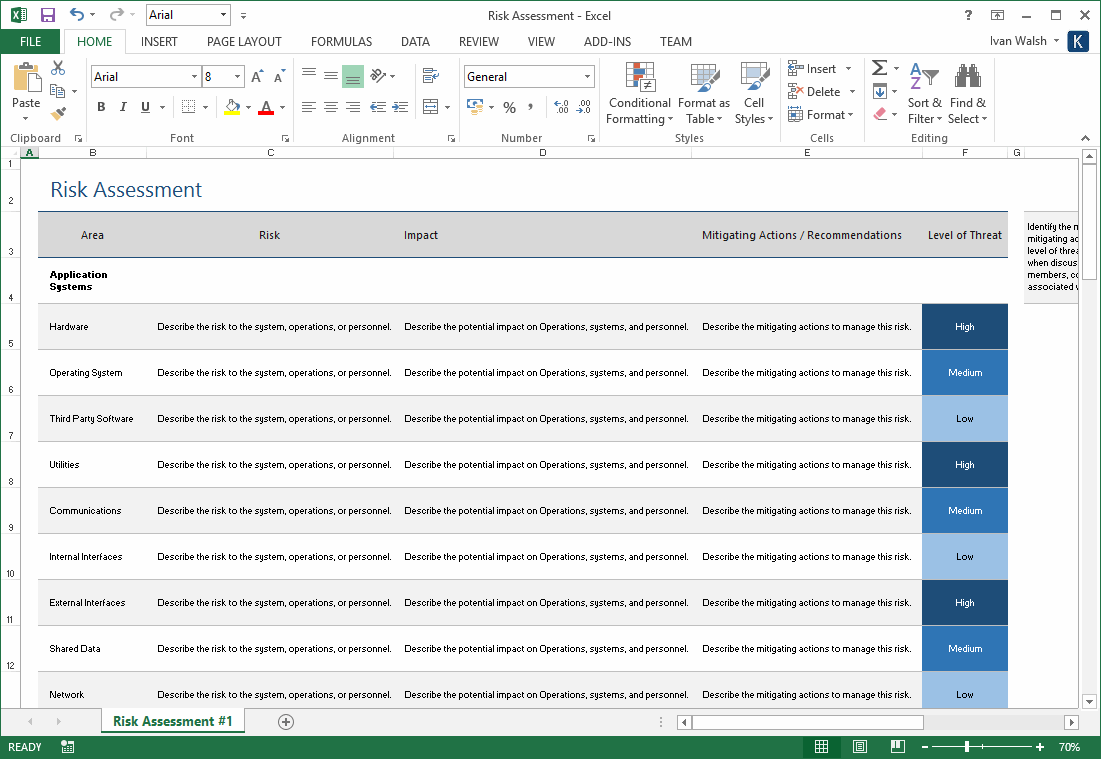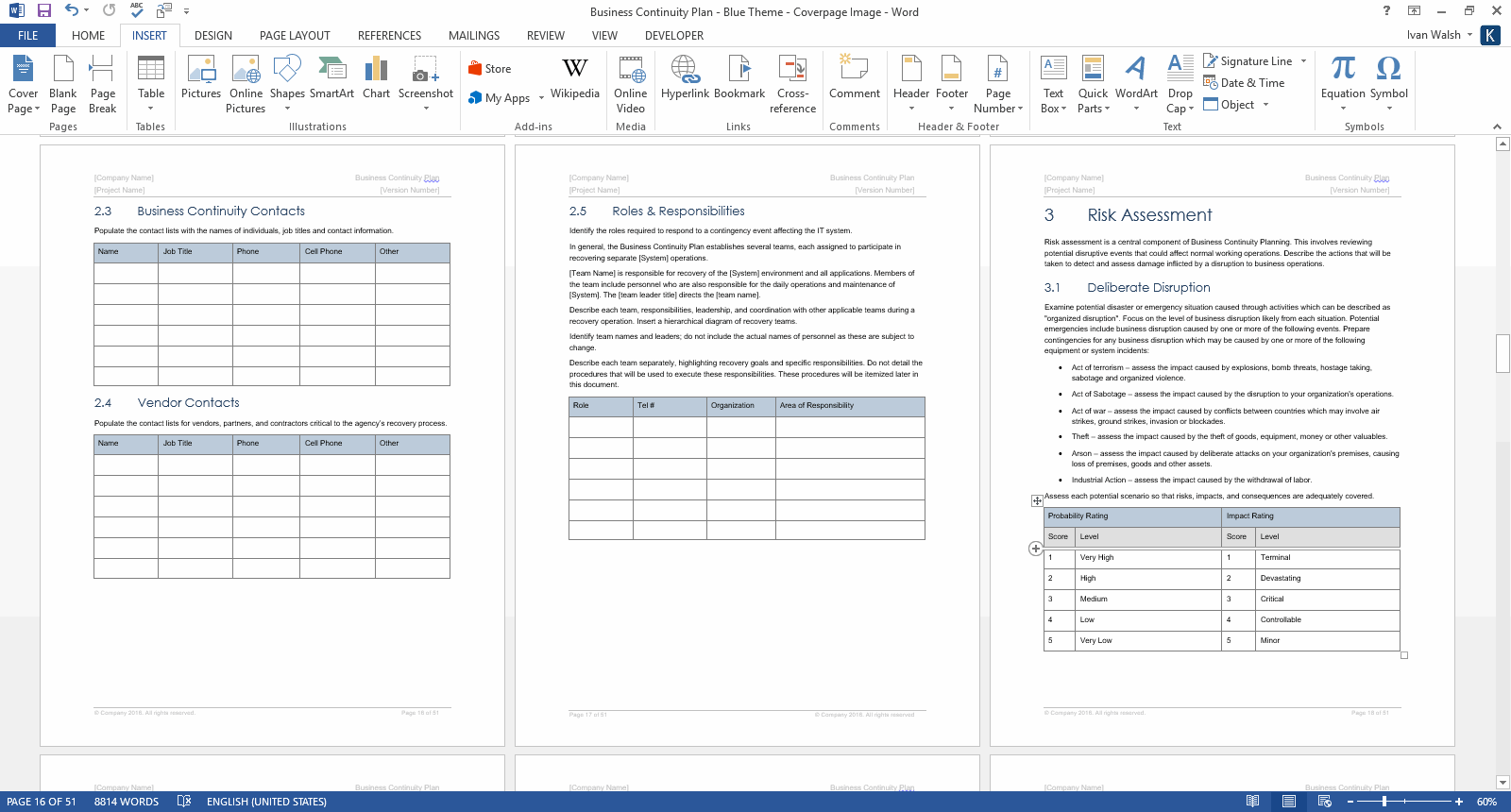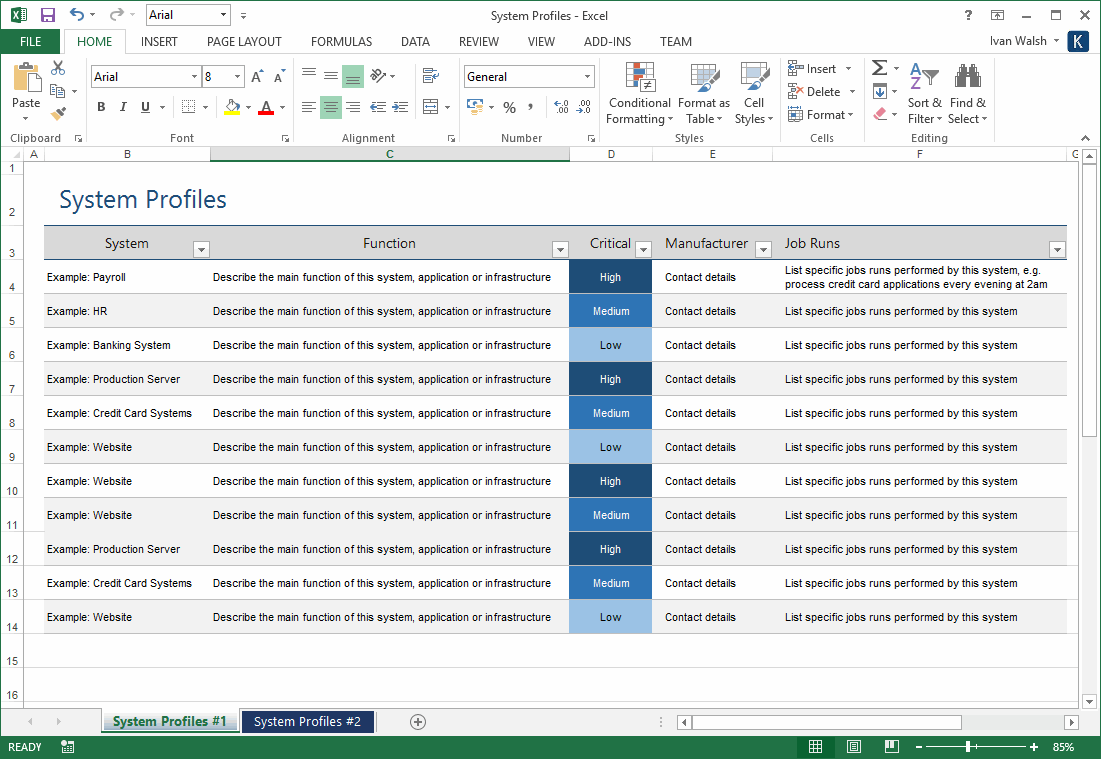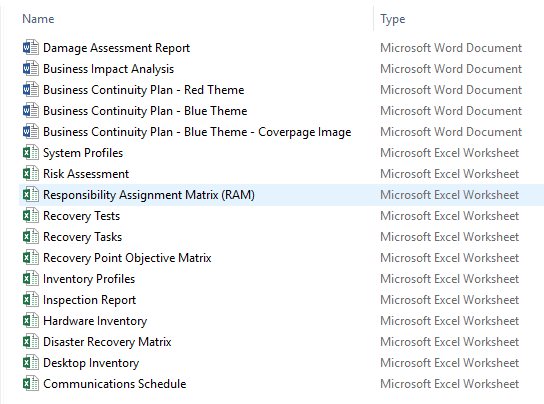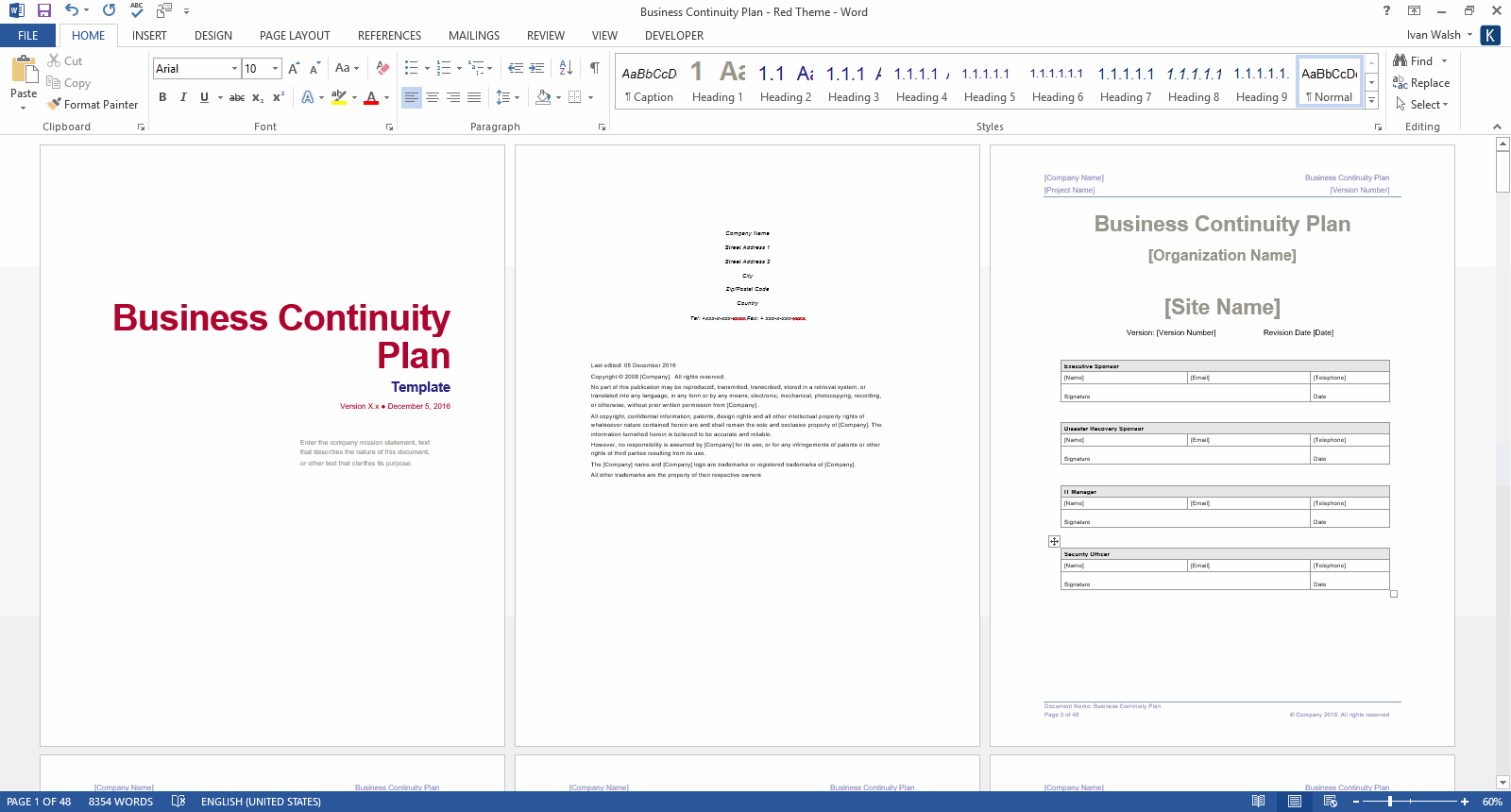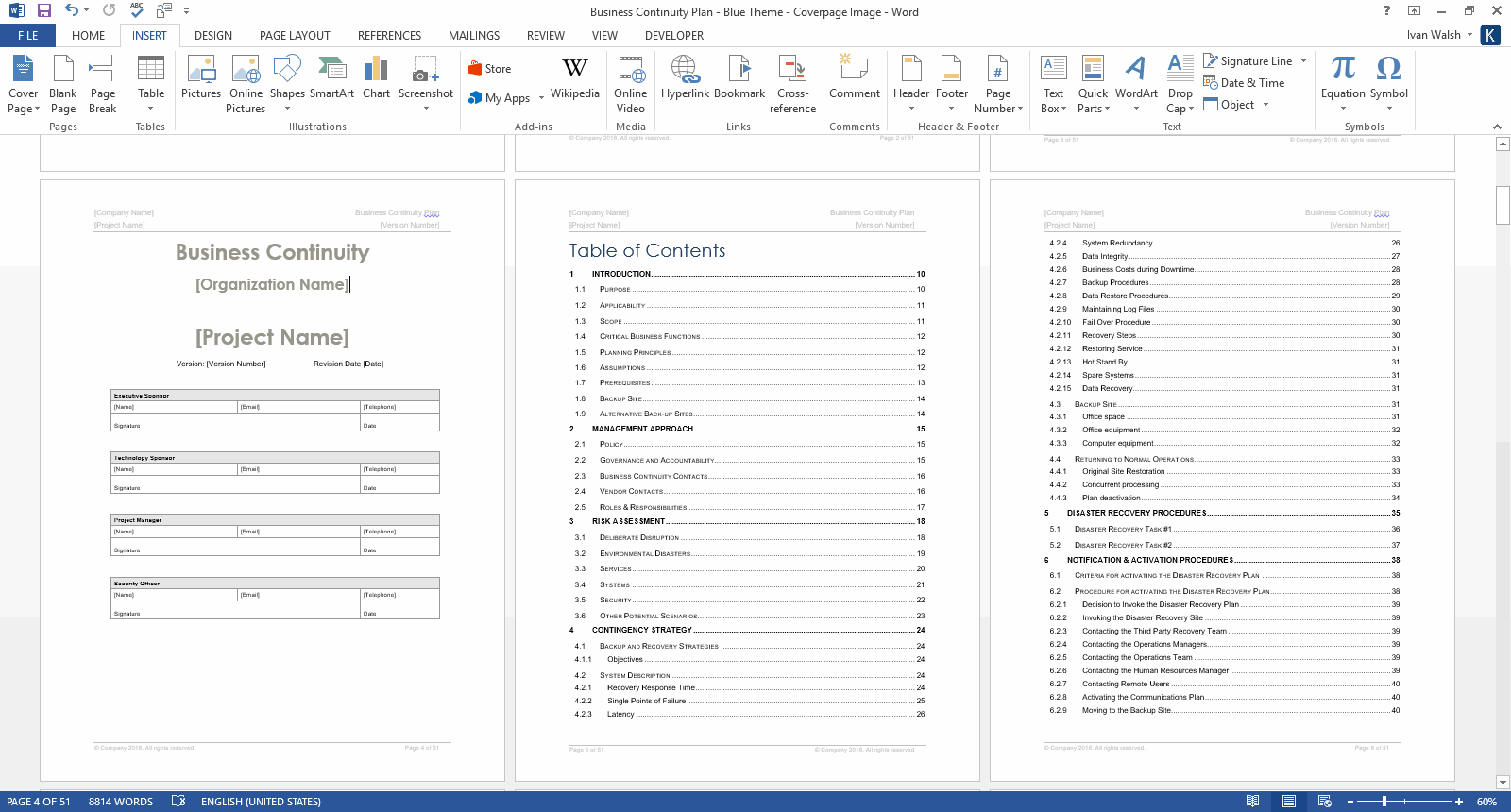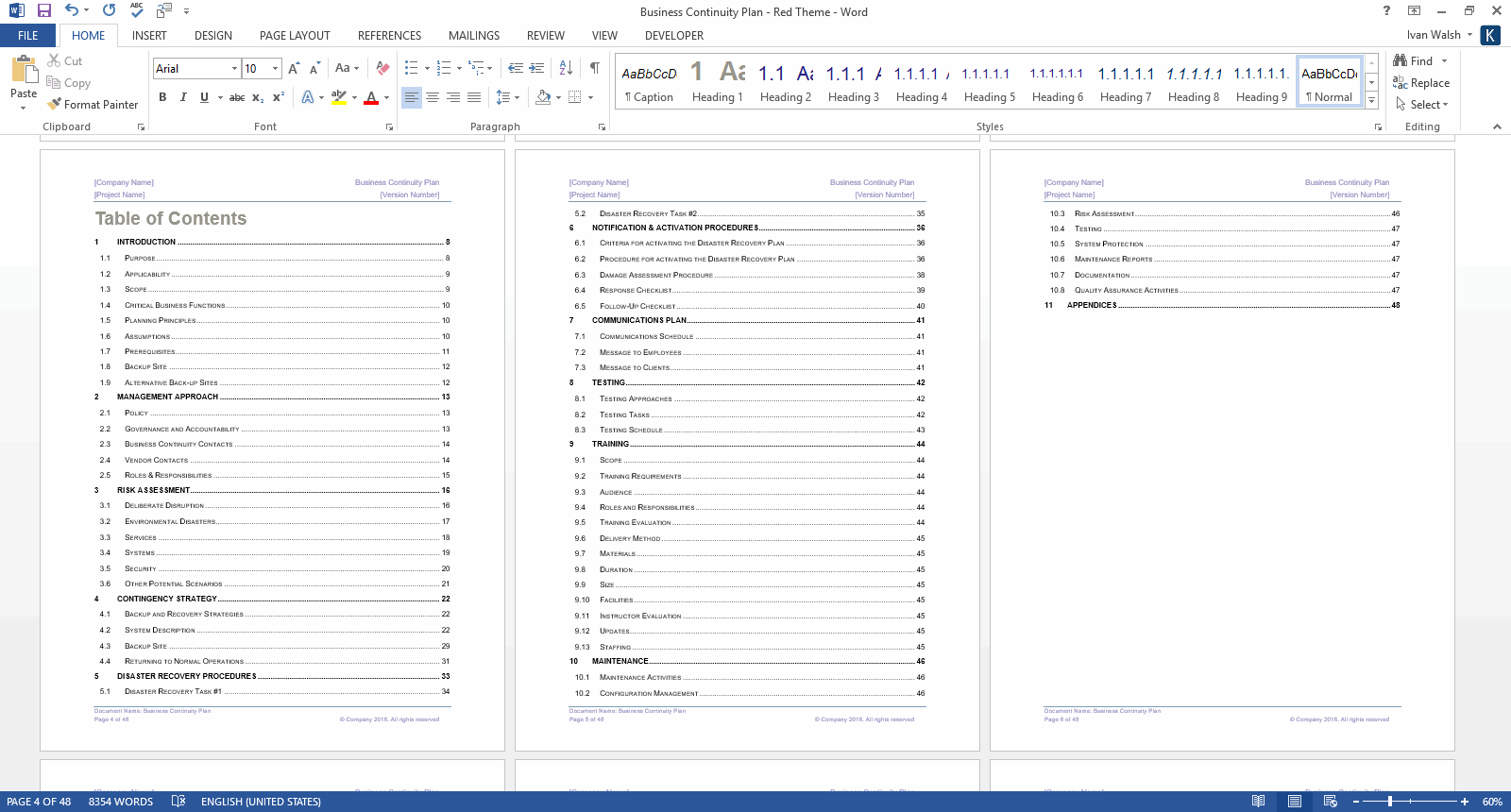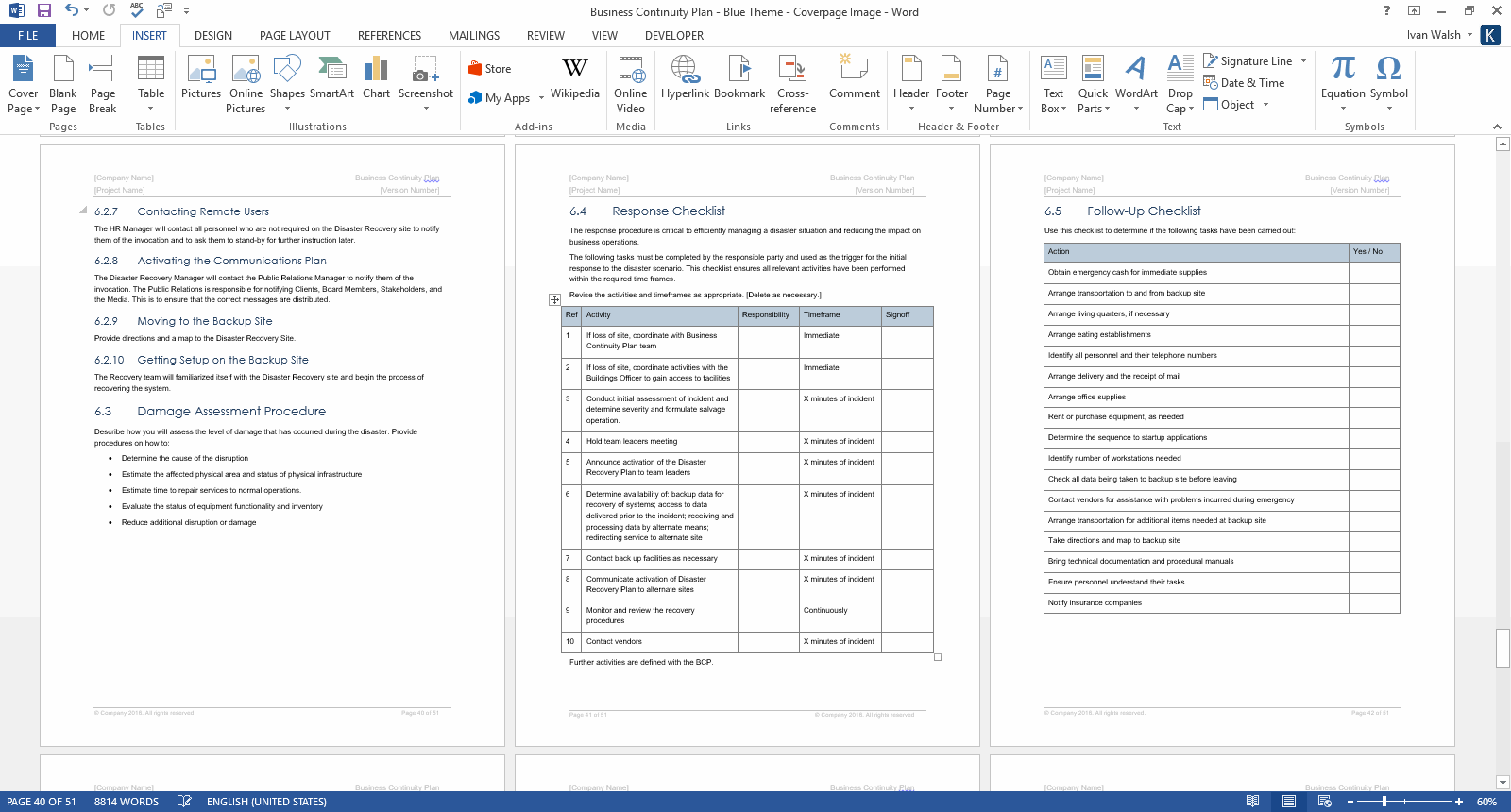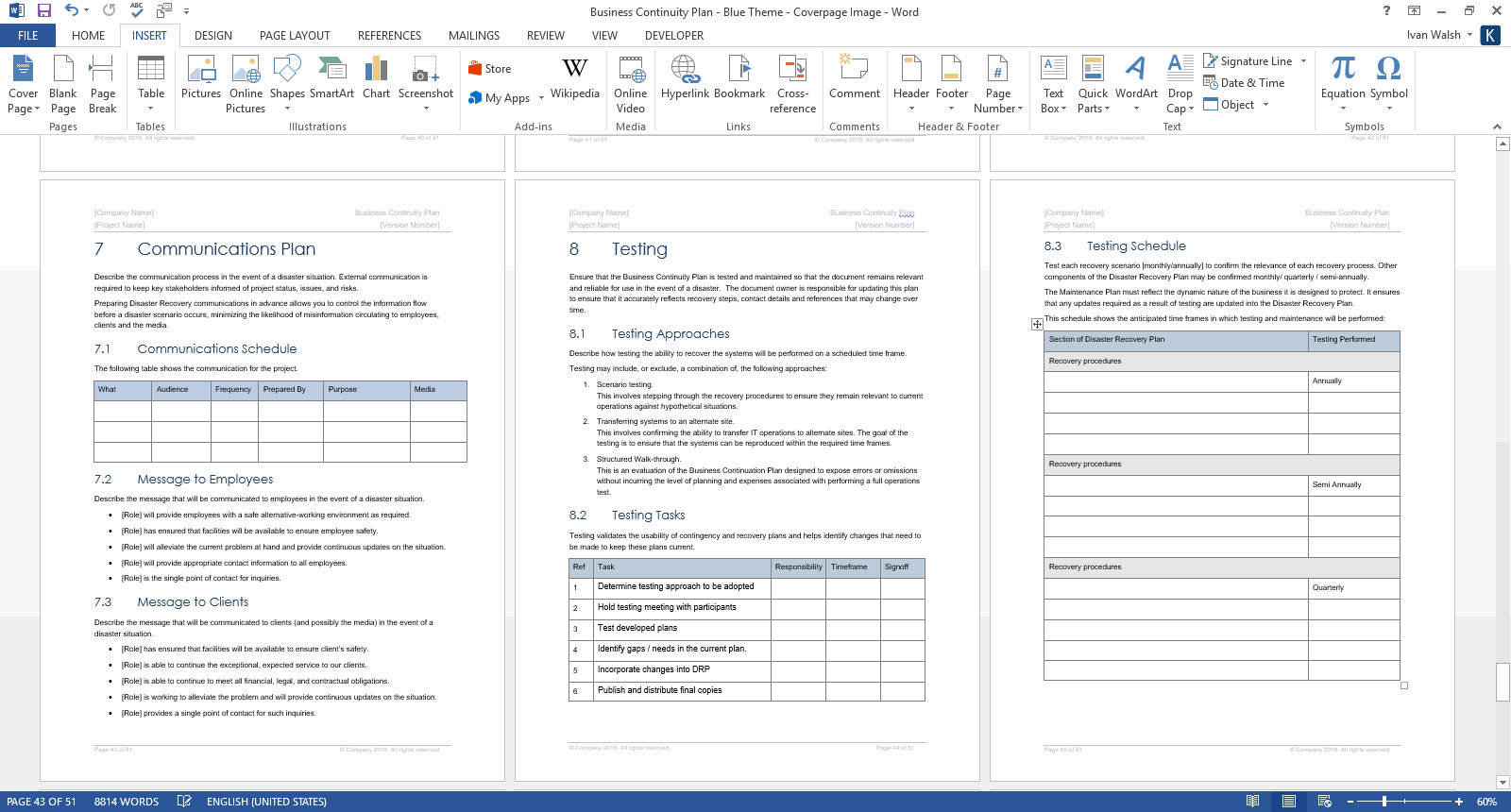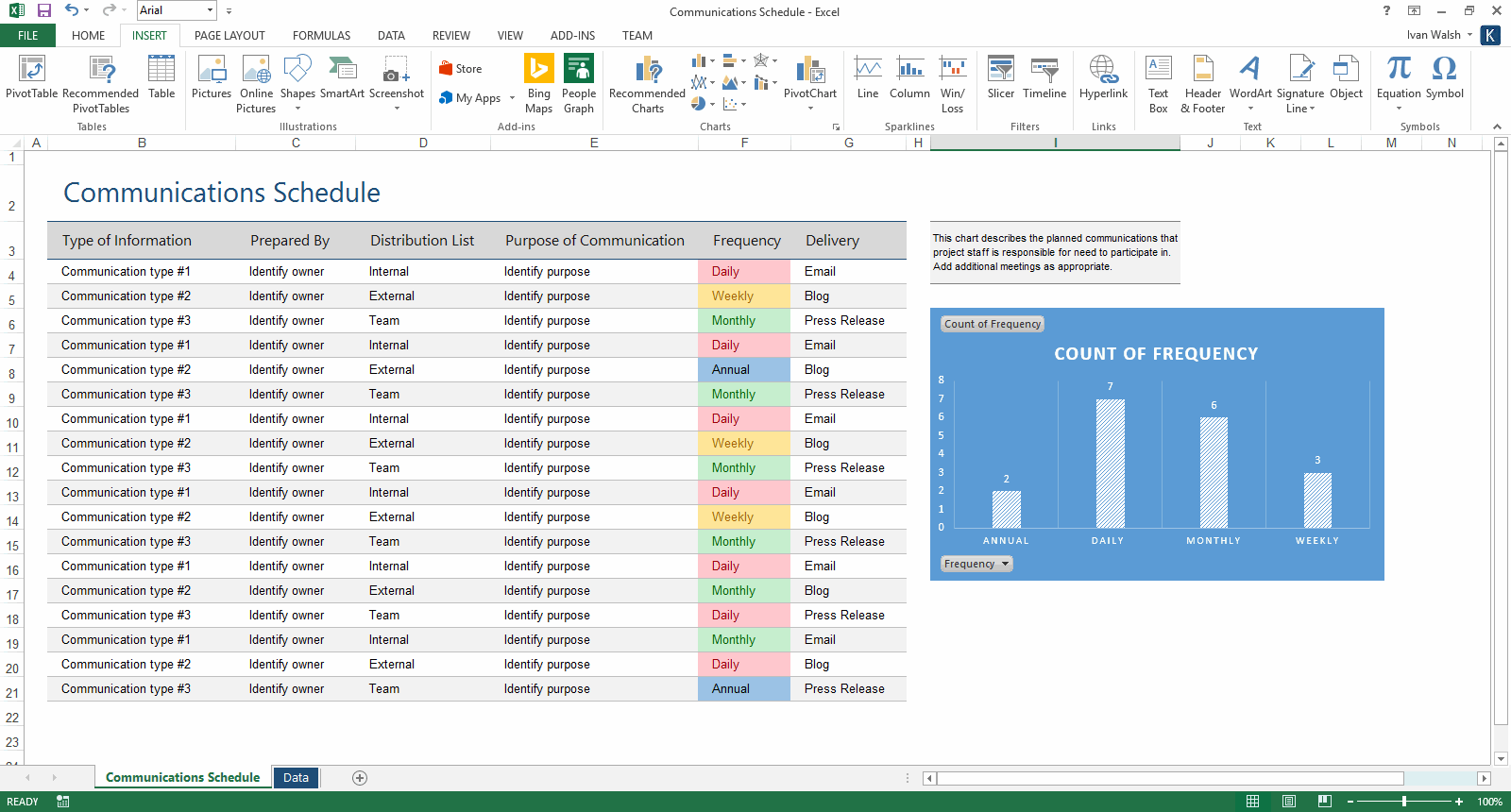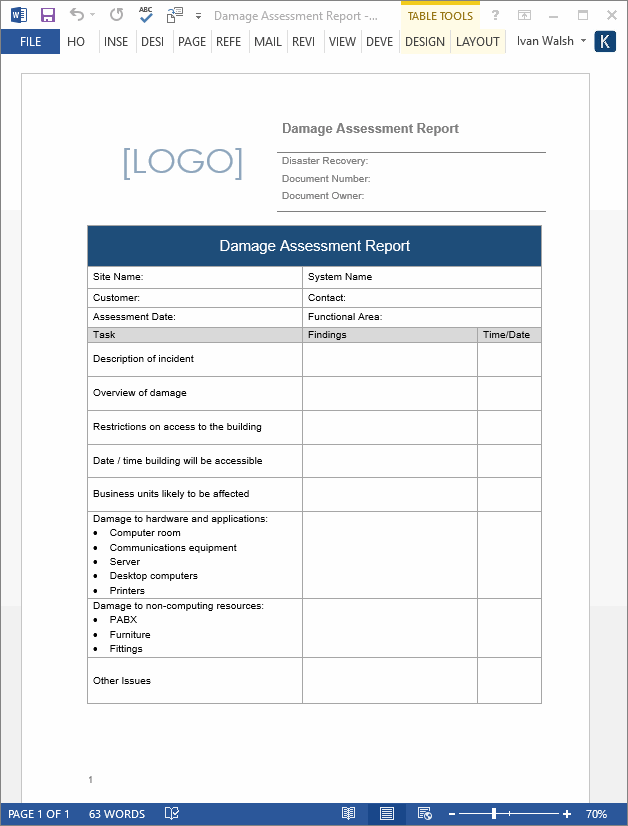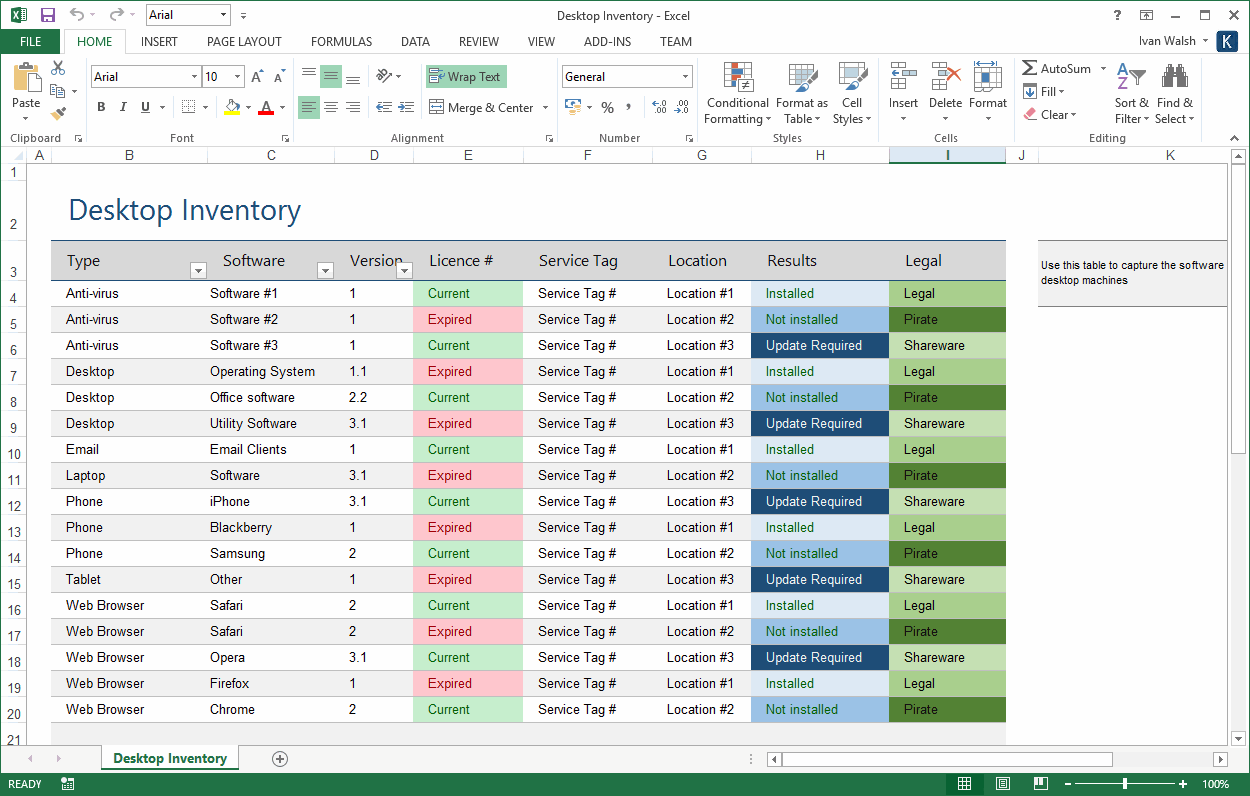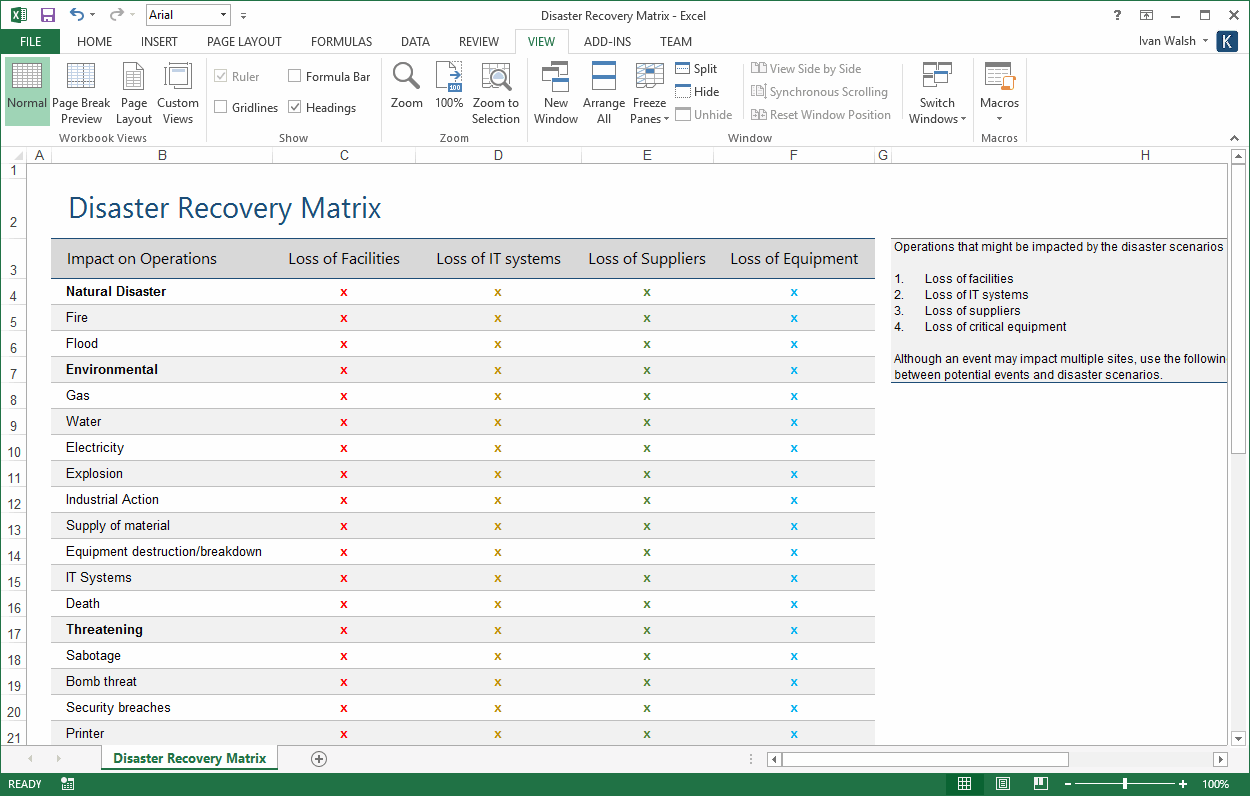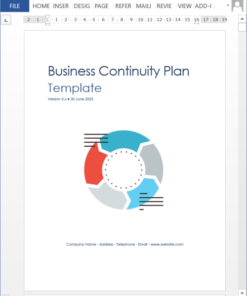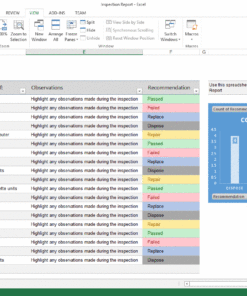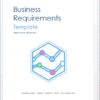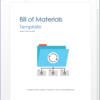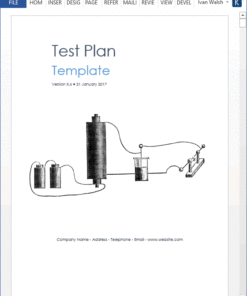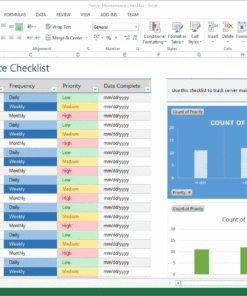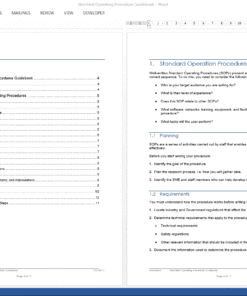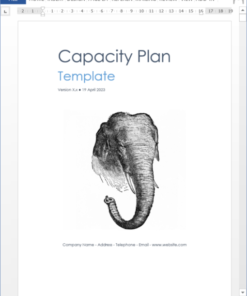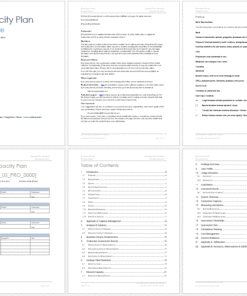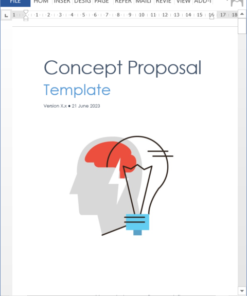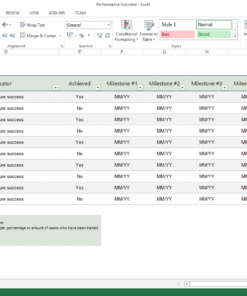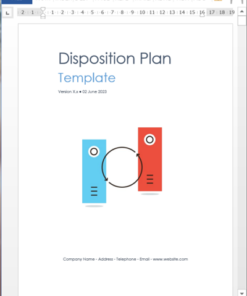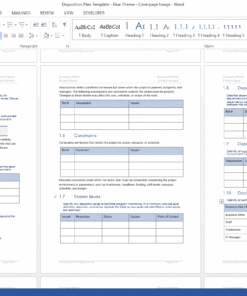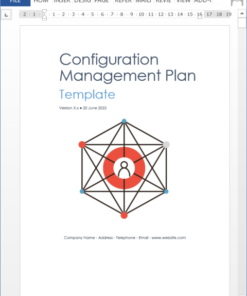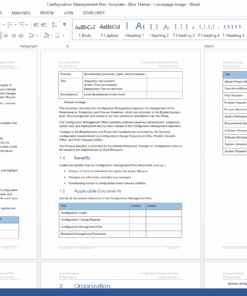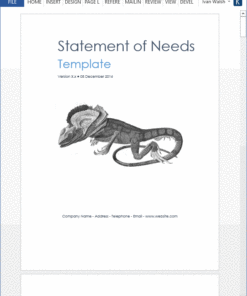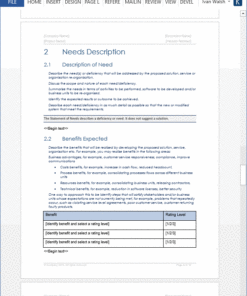Business Continuity templates (MS Office)
$29.99 Original price was: $29.99.$19.99Current price is: $19.99.
You can use this Business Continuity Plan Template (48-page Word + 12 Excel spreadsheets), free Business Impact Analysis, and Damage Assessment Report templates to recover quickly and effectively from an unforeseen disaster or emergency.
You can use this Business Continuity Plan Template (48-page Word + 12 Excel spreadsheets), free Business Impact Analysis, and Damage Assessment Report templates to recover quickly and effectively from an unforeseen disaster or emergency.
Business Continuity Plan: Key Benefits
This Business Continuity Plan helps you to:
- Assess potential risks and prepare contingencies for unforeseen events, such as disaster scenarios
- Maintain a minimum level of service while restoring your organization to normal business operations
- Protect the customer base and protect business functions which provide products or services
- Minimize interruptions to normal operations
- Minimize the economic impact of the interruption
- Establish alternative means of operation in advance
- Train personnel with emergency procedures
- Restore service to normal mode of operation
Business Continuity Plan: Table of Contents
1 Introduction
1.1 Purpose
1.2 Applicability
1.3 Scope
1.4 Critical Business Functions
1.5 Planning Principles
1.6 Assumptions
1.7 Prerequisites
1.8 Backup Site
1.9 Alternative Back-up Sites
2 Management Approach
2.1 Policy
2.2 Governance and Accountability
2.3 Business Continuity Contacts
2.4 Vendor Contacts
2.5 Roles & Responsibilities
3 Risk Assessment
3.1 Deliberate Disruption
3.2 Environmental Disasters
3.3 Services
3.4 Systems
3.5 Security
3.6 Other Potential Scenarios
4 Contingency Strategy
4.1 Backup and Recovery Strategies
4.1.1 Objectives
4.2 System Description
4.2.1 Recovery Response Time
4.2.2 Single Points of Failure
4.2.3 Latency
4.2.4 System Redundancy
4.2.5 Data Integrity
4.2.6 Business Costs during Downtime
4.2.7 Backup Procedures
4.2.8 Data Restore Procedures
4.2.9 Maintaining Log Files
4.2.10 Fail Over Procedure
4.2.11 Recovery Steps
4.2.12 Restoring Service
4.2.13 Hot Stand By
4.2.14 Spare Systems
4.2.15 Data Recovery
4.3 Backup Site
4.3.1 Office space
4.3.1.1 Work space
4.3.1.2 Meeting space
4.3.1.3 Storage space
4.3.1.4 Safe
4.3.2 Office equipment
4.3.2.1 Telephone
4.3.2.2 Fax
4.3.2.3 E-mail
4.3.2.4 Mail, courier, and messenger services
4.3.2.5 Stationery, photocopying, and other facilities
4.3.3 Computer equipment
4.3.3.1 Personal Computers
4.3.3.2 Printer
4.3.3.3 Non-Recovery Departments and Personnel
4.4 Returning to Normal Operations
4.4.1 Original Site Restoration
4.4.2 Concurrent processing
4.4.3 Plan deactivation
5 Disaster Recovery Procedures
5.1 Disaster Recovery Task #1
5.2 Disaster Recovery Task #2
6 Notification & Activation Procedures
6.1 Criteria for activating the Disaster Recovery Plan
6.2 Procedure for activating the Disaster Recovery Plan
6.2.1 Decision to Invoke the Disaster Recovery Plan
6.2.2 Invoking the Disaster Recovery Site
6.2.3 Contacting the Third Party Recovery Team
6.2.4 Contacting the Operations Managers
6.2.5 Contacting the Operations Team
6.2.6 Contacting the Human Resources Manager
6.2.7 Contacting Remote Users
6.2.8 Activating the Communications Plan
6.2.9 Moving to the Backup Site
6.2.10 Getting Setup on the Backup Site
6.3 Damage Assessment Procedure
6.4 Response Checklist
6.5 Follow-Up Checklist
7 Communications Plan
7.1 Communications Schedule
7.2 Message to Employees
7.3 Message to Clients
8 Testing
8.1 Testing Approaches
8.2 Testing Tasks
8.3 Testing Schedule
9 Training
9.1 Scope
9.2 Training Requirements
9.3 Audience
9.4 Roles and Responsibilities
9.5 Training Evaluation
9.6 Delivery Method
9.7 Materials
9.8 Duration
9.9 Size
9.10 Facilities
9.11 Instructor Evaluation
9.12 Updates
9.13 Staffing
10 Maintenance
10.1 Maintenance Activities
10.2 Configuration Management
10.3 Risk Assessment
10.4 Testing
10.5 System Protection
10.6 Maintenance Reports
10.7 Documentation
10.8 Quality Assurance Activities
11 Appendices
Product Details
The templates are in Microsoft Word and Excel format. The template pack includes the following documents:
| 2 x Business Continuity Plan templates | 48 page template | |
| Business Impact Analysis | 2 page template | |
| Damage Assessment Report | 1 page template | |
| Communications Schedule | 1 x worksheet | |
| Desktop Inventory | 1 x worksheet | |
| Disaster Recovery Matrix | 1 x worksheet | |
| Hardware Inventory | 1 x worksheet | |
| Inspection Report | 1 x worksheet | |
| Inventory Profiles | 1 x worksheet | |
| Recovery Point Objective Matrix | 1 x worksheet | |
| Recovery Tasks | 1 x worksheet | |
| Recovery Tests | 1 x worksheet | |
| Responsibility Matrix | 1 x worksheet | |
| Risk Assessment | 1 x worksheet | |
| System Profiles | 1 x worksheet |
Related products
Excel
Software Development
Business

